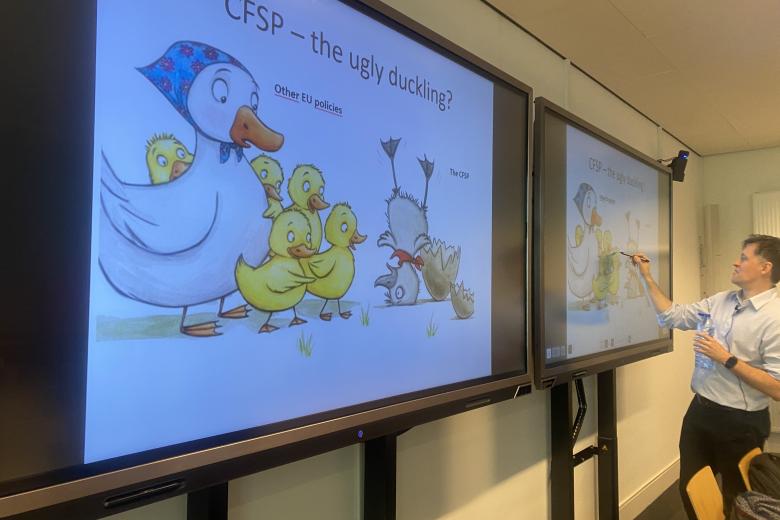Where art meets science
Four researchers from MERLN, the institute for Technology-Inspired Regenerative Medicine, together created the spin-off company 4 Blue Cells. Inspired by the stunningly beautiful images they often see through the electron microscope in their day-to-day work, they came up with the idea of helping people tell their personal story at this microscopic cellular level. “Not everyone has access to labs and microscopes, so we created a platform where everyone can obtain scientific images of their own cells. And we make a piece of art from them that you can hang on the wall at home.”
Basically, 4 Blue Cells offers the opportunity to have super broad photographs taken of blood cells, hair and fingerprints on a micro level. Customers get a digital image which they can have printed on wood, canvas, acrylic or even on wallpaper. According to the four founders, images on this level are quite new.
For Ziryan Othman, Erik Vrij, Ivan Moldero-Lorenzo and Angad Malhotra, things didn’t happen overnight. Encouraged by the entrepreneurship workshops they were offered because Clemens van Blitterswijk, director of MERLN, finds entrepreneurship very important, they developed a standard protocol for making images of blood cells, hair and fingerprints. Initially, they used ‘material’ from themselves and their environment.
Ivan: “For example, this is an image of my ex-girlfriend’s fingerprint. I gave it to her and she really likes it because it reminds her of when we were running through the forest in autumn. The fingerprint was made in autumn and we coloured it with the colours of the season. You don’t recognise it as a fingerprint because we zoomed in so much and it became an artistic piece of work.”
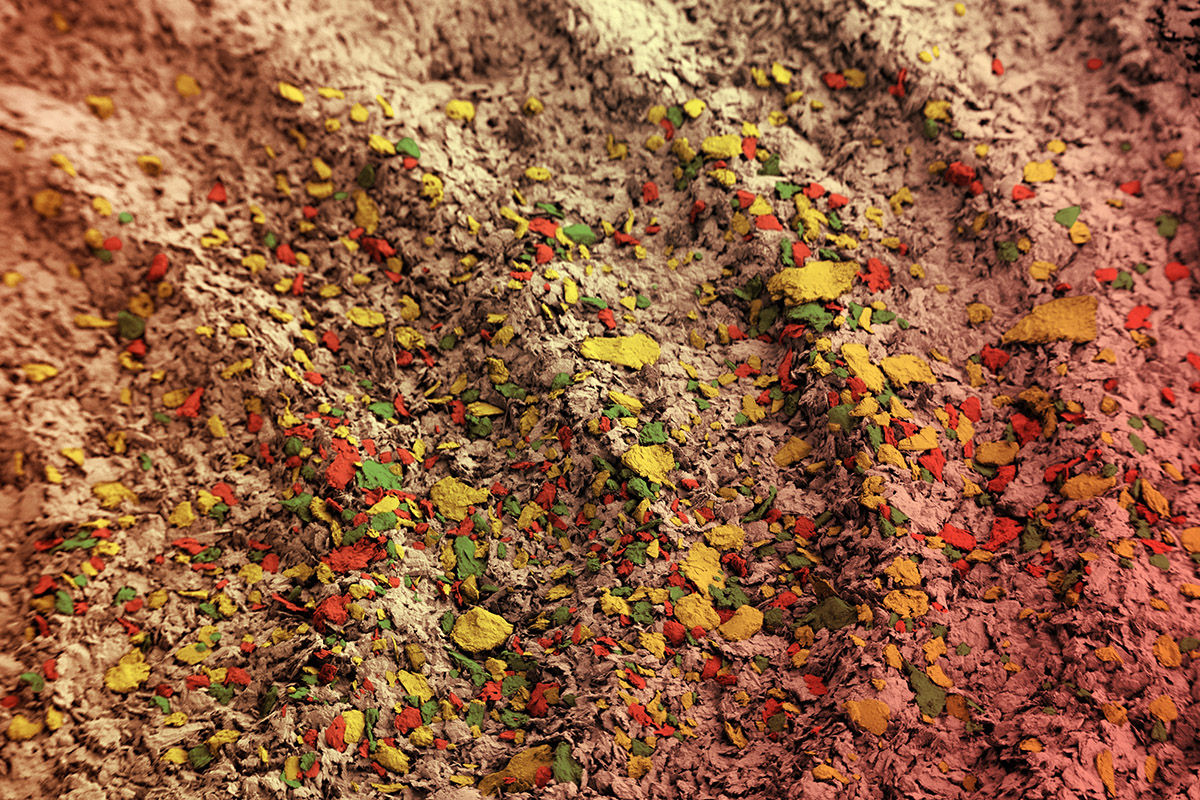
Erik: “The possibilities are immense. You have to give people some ideas; otherwise, they don’t know what’s possible. For example, the parents of a friend of mine have a painting of their blood cells hanging on the wall. The father wanted to surprise his wife for their 25th anniversary. We took a picture of both of their blood cells sprinkled with salt—partly for the aesthetic effect and partly because she likes salty food.”
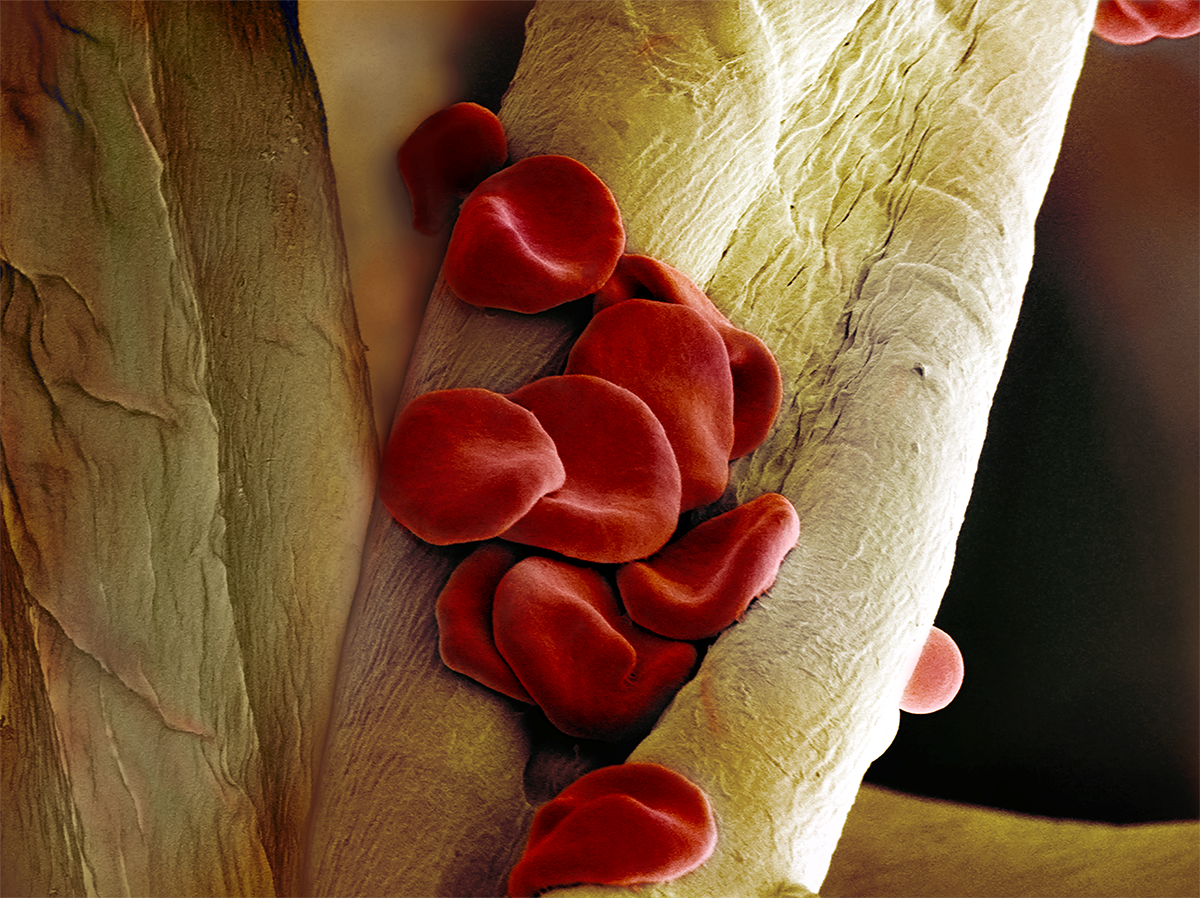
Ivan: “Or this image of red and white blood cells in a spider web. We made that for a friend who writes books about superheroes in which he tries to scientifically explain why they can do what they do. Why can Spiderman climb, for example? And because Spiderman is his favourite hero, we combined his blood cells with a spider web.”
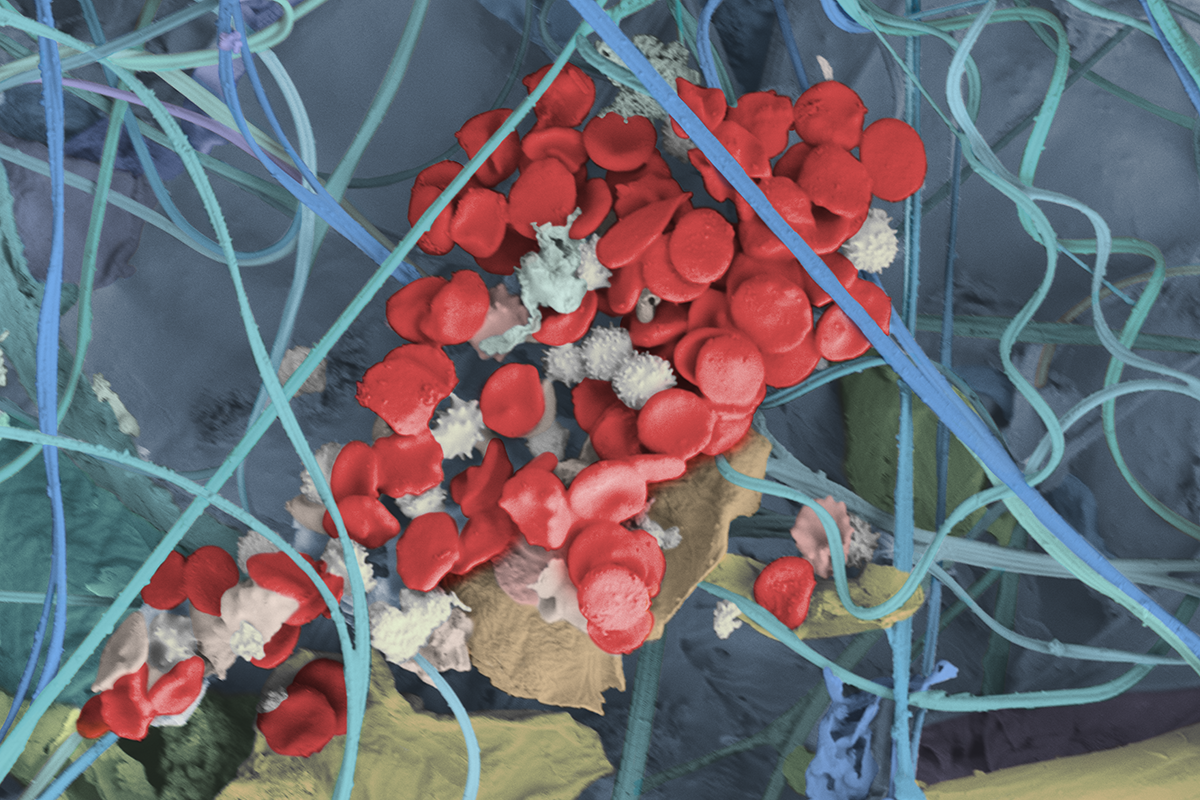
Ziryan: “This, for example, is an image of human hair and dog hair with sand, made for an owner and her dog.”
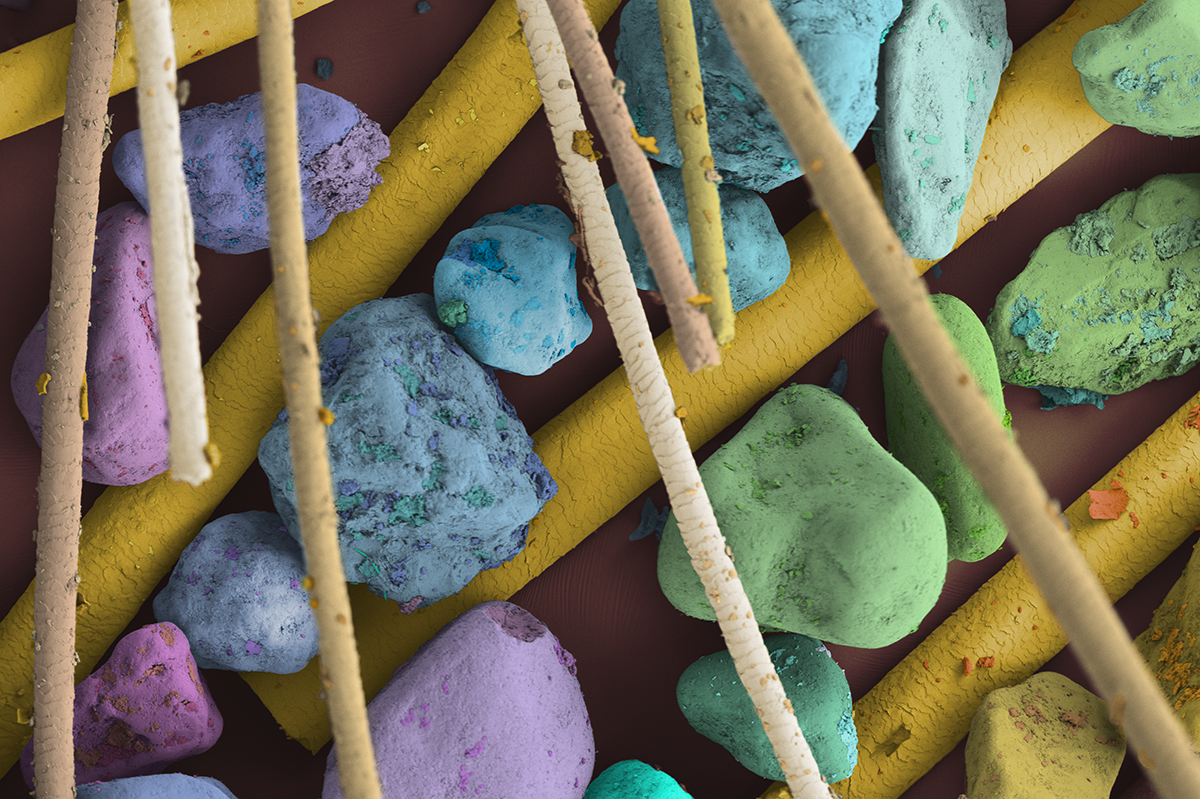
Ziryan: “In the beginning, all of us were involved in developing the protocols and how to do the imaging and colouring. Now, everyone has his own task. I’m doing the marketing and sales, Erik is handling the financial and legal side, Ivan is making the images and Angad, who works in Zürich now, is setting up this business over there.”
Chasing the lion
4 Blue Cells focuses not only on individuals but also on companies. For example, Cold Spring Harbor Asia a research institute in China, has five of their images hanging on the wall. And for the Maastricht company CiMaas, which develops immunotherapy, they made an image that shows exactly what this therapy does in the fight against cancer.
Ivan: “We not only create art, but we also help companies to communicate better. CiMaas wanted to show on a microscopic level how immunotherapy cures people: cells from the immune system kill the cancer cells. We managed to capture the different steps of the killing process in a single image. In green, you have the T-killer cells and in brown you have the cancer cells. At the top right, you can see a perfect example of a cancer cell in brown, on the left it starts to explode and down below it has exploded.”
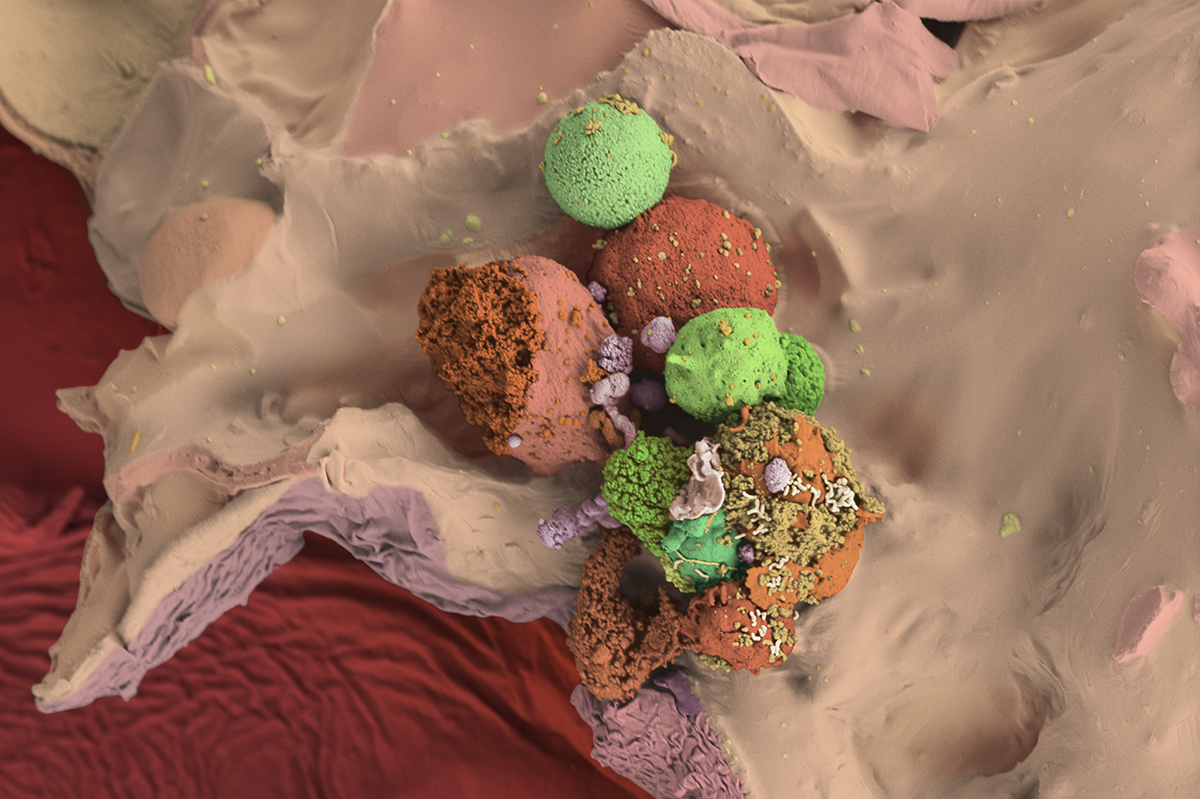
Erik: “It’s a chemical process which causes the cell to explode. What you see in the back is cork; that’s our artistic touch.”
Ivan: “Because the structure of the cork resembles the bone marrow, which is where many of these processes take place.”
Erik: “Normally, this is shown using computer-animated images, but this is the real thing.”
Ziryan: “In our company, we don’t change anything, we just colour it. It’s a lot of work to make an image like this.”
Ivan: “You have to prepare these kinds of samples and go to the microscope and look for a good spot. Then you have to wait for the right moment that shows what you want to illustrate with the picture and make a good composition. Imagine that you’re on a safari and you want to see a lion chase, attack and kill a goat. You have to wait and look for the right moment. Finally, you have to colour the picture because all pictures come in black and white. Sometimes you can colour it in one day, sometimes it takes a month. It depends on how detailed you want to make it.”
Ziryan: “When we first started, we said this is crazy.”
Ivan: “It really is a research project; you don’t know if you’ll get this picture.”
Ziryan: “It’s unique. We haven’t come across anything like this.”
Ivan: “What you can find on immunotherapy is a single image of the cancer cells plus the killer cells, but never in an explosion like in this one. Or you can find videos where killer cells chase and keep attacking the cancer cells and eventually they explode and die, but you don’t get this resolution or bright field images.”
Erik: “Normal microscopy is with light; this is with electrons. So you can go far deeper than light can go.”
Ziryan: “We’re still in the process of exploring all the possibilities. For example, I’m going to become a father soon. I want to collect the cord cells and we’re going to try to make an image of them. I already asked the doctors if this would be possible. They were surprised: ‘What are you going to do with them?’. I said I wanted to make an artistic portrait of them. They’re curious and want to see the picture when it’s ready.”
Also curious about this concept and the many possibilities? Visit www.4bluecells.com
Also read
-
DigiMach places Meuse-Rhine Euroregion at the heart of industrial digitalisation
DigiMach (Digital Machining) is a new cross-border project uniting Belgium, Germany, and the Netherlands around a common goal: accelerating the digitalisation of the machining industry in the Meuse-Rhine Euroregion.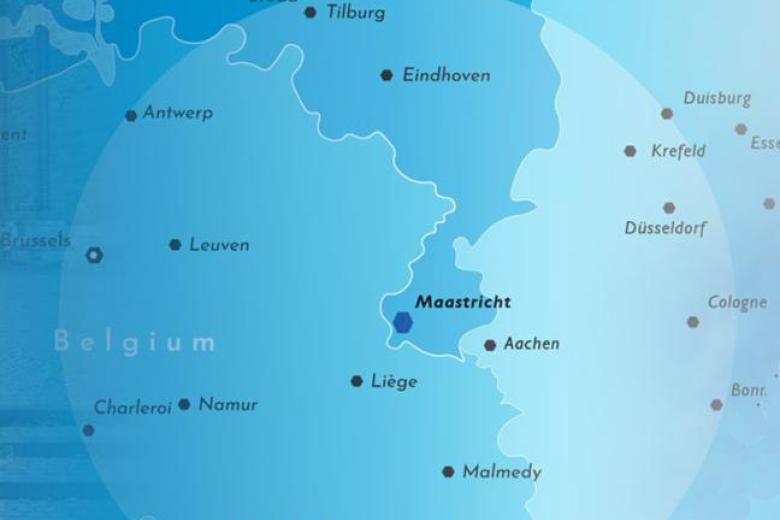
-
Globalisation & Law Network seminar with Áine Ryall
On 24 November 2025, the Globalisation & Law Network, together with the Institute for Globalisation and International Regulation (IGIR) held the seminar with Professor Áine Ryall.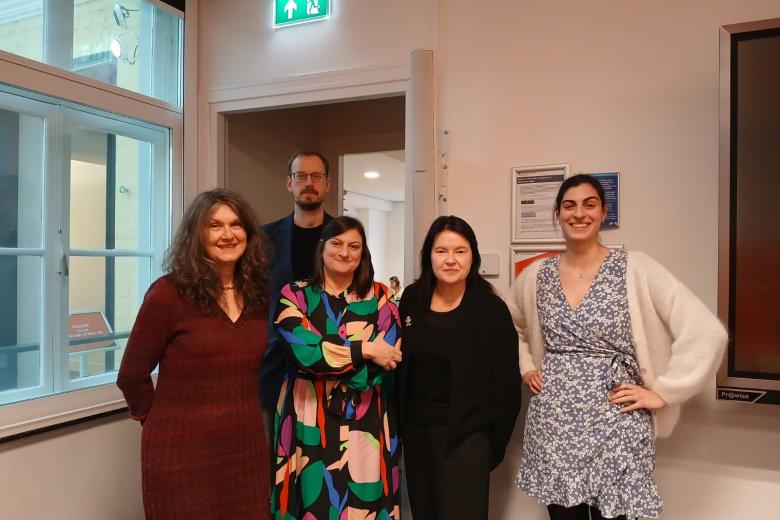
-
Guest Lecture: Lóránt Havas explores current challenges in the EU’s CFSP
Lóránt Havas delivered a guest lecture on the EU’s evolving CFSP, discussing key legal developments, institutional challenges, and new defence instruments.